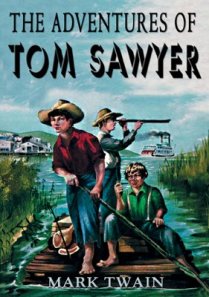Stale writing? 4 Underused Literary Devices:
Aphorism, Hyperbole, Tmesis and Zeugma
[Definitions and examples culled and summarized from http://literarydevices.net/]
In the last days of NaNoWriMo [National Novel Writing Month, November] or any other intensive writing period, we authors often suffer from ennui from the endless repetition of putting thousands of words on screen (or, if you are a Luddite, on paper).
We get bored with our style. We are tired of the way we phrase things. We depict the same thing repeatedly. We use similar sentence structure too often. Our dialogue sounds forced, our imagery is trite and our comparisons are about as subtle as the proverbial freight train.
Like, here.

image from http://radioink.com
A reviewer counted the number of times the main character “rolled her eyes” in a best-selling fiction novel: 14 eye-rolls in a book that had fewer than 200 pages. She was described as “gaping” 23 times. Inexcusably poor editing and boring writing, yet that particular book featured sexual bondage and a billionaire lover, so it sold a bizillion copies. Sigh.
Meanwhile, back in literature…. How do we spice up our writing so that we and our readers stay interested, feel stimulated (and not by a cattle prod or whip), and want to keep going? Underused Literary Devices to the rescue, here.
The above-mentioned and other websites have a panoply of Literary Devices, many of which I had never heard of or spent decades forgetting I’d learned in school. Some are only for poetry, but below are four that are usable in any kind of writing.
Have fun!
WAKE UP!
APHORISM
DEFINITION: …is an original thought, spoken or written in a laconic/concise and memorable form, as a statement of truth or opinion. Aphorisms are expressed in a pithy, witty manner which expresses a philosophical, moral or literary principle. Proverbs (as religiously or culturally promoted), Maxims, Adages and (when overused) Clichés are types of Aphorisms.
EXAMPLES: “To err is human, to forgive divine.” from An Essay on Criticism by Alexander Pope

image from http://popphilosophy.typepad.com
HYPERBOLE
DEFINITION: Adynaton is an extreme form of Hyperbole, one that is completely impossible to happen in reality, presented as an exaggerated comparison or contrast.
EXAMPLE:
I’ll love you till the ocean
Is folded and hung up to dry
from As I Walked Out One Evening by W.H. Auden

image from http://cupcakesncraftsbyg.com
TMESIS
DEFINITION: …is a rhetorical device that involves the breaking down of a phrase or a word into two parts as an insertion of a word between a word, a compound word or a phrase (phrasal verbs usually). Tmesis is accomplished by dividing a phrase or word into its components by inserting another word in the middle of that phrase or word. Tmesis works best with words that have more than three syllables.
Fun fact: In Australian English, Tmesis is called tumba rumba.
EXAMPLES:
“This is not Romeo, he’s some other where.” from Romeo and Juliet by William Shakespeare
Eliza Dolitttle: “Fan-bloody-tastic or abso-blooming-lutely” from Pygmalion by George Bernard Shaw)

Audrey Hepburn as “Eliza Doolittle” in the film of My Fair Lady, based on Pygmalion, image from http://www.listal.com
ZEUGMA
DEFINITION: … is a word, usually a verb or an adjective, applied to more than one noun, blending together grammatically and logically different ideas to produce a unique artistic effect, making the literary works more interesting and effective as it serves to adorn expressions and to add emphasis to ideas in impressive style.
EXAMPLE: “[They] covered themselves with dust and glory.”
from The Adventures of Tom Sawyer by Mark Twain (Samuel Clemens)

Aaahhh. Did you feel that?

image from http://www.gotbrainy.com
It’s a breath of fresh air blowing in through the million drafty doors and windows in your gi-friggin-normous memory palace, a zephyr that brings in new ideas and high heating bills.
Use them well.
Filed under: Life lessons, Personal stories, Writing Tagged: aphorisms, cliches, morals, old sayings, proverbs, tag lines 





















